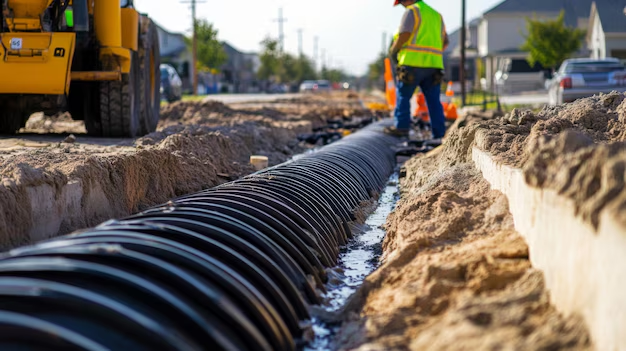Drain Construction in Bangladesh

Get in Touch with Us
Drain construction in Bangladesh is a critical aspect of urban infrastructure development, primarily aimed at managing rainwater and wastewater to prevent flooding and maintain public health. Effective drainage systems are essential for ensuring that cities and towns can handle the heavy monsoon rains and reduce waterlogging, which is a persistent issue in many urban and semi-urban areas.
Key Aspects of Drain Construction in Bangladesh:
Importance of Drainage Systems:
Flood Prevention: Given Bangladesh’s low-lying geography and monsoon climate, drainage systems are essential for channeling rainwater away from populated areas to prevent waterlogging and flooding.
Public Health: Proper drainage systems reduce the risk of waterborne diseases by managing wastewater and preventing stagnant water, which can become a breeding ground for mosquitoes and other disease vectors.
Current Challenges:
Overburdened Infrastructure: Rapid urbanization has outpaced the capacity of existing drainage systems, leading to frequent flooding in cities like Dhaka and Chittagong.
Encroachment and Blockages: Unplanned development and the illegal encroachment of natural canals and drainage paths disrupt the flow of water, contributing to waterlogging.
Waste Management Issues: Poor waste disposal practices often result in drains being clogged with solid waste, which significantly reduces their effectiveness.
Climate Change: Rising sea levels and heavier rainfall due to climate change exacerbate the pressure on existing drainage systems.
Types of Drainage Systems:
Open Drains: These are common in many areas but are susceptible to clogging and pose public health risks if not maintained properly.
Closed Drains (Underground): While more efficient and safer, these systems are costlier and require regular maintenance and monitoring.
Canals and Waterways: Some urban centers still use natural canals for drainage, but these often need restoration and expansion to meet current needs.
Government and Municipal Initiatives:
Dhaka Water Supply and Sewerage Authority (DWASA) and other municipal bodies are responsible for managing and maintaining drainage systems.
Projects like the Dhaka Integrated Flood Control and Drainage System aim to improve infrastructure to manage heavy rainwater flow.
Upgrading and expansion projects have been undertaken to modernize drainage systems and improve water management in line with urban growth.
Technological and Sustainable Solutions:
The adoption of smart water management systems can improve drainage efficiency through real-time monitoring and predictive analytics.
Sustainable Urban Drainage Systems (SUDS), including green roofs and permeable pavements, are being explored to reduce surface runoff and manage rainwater more effectively.
Wastewater treatment plants are increasingly integrated into new construction projects to help filter and manage water more sustainably.
Community Involvement and Awareness:
Public awareness campaigns are important to encourage residents to avoid practices that lead to clogged drains, such as improper waste disposal.
Community-led initiatives can help monitor local drains and report issues, fostering a sense of ownership and responsibility among residents.
Future Developments:
Master Plans for Drainage: Comprehensive plans are being developed in major cities to redesign drainage systems with a focus on resilience to climate change and urban expansion.
Funding and Partnerships: Investments from government bodies, foreign aid, and public-private partnerships are expected to play a role in implementing large-scale drainage improvements.
Drain construction in Bangladesh is essential for sustainable urban development. Continuous efforts to expand and modernize the drainage infrastructure, combined with better waste management and urban planning, will be crucial for mitigating the risks of flooding and maintaining public health as the country continues to urbanize.
